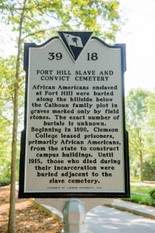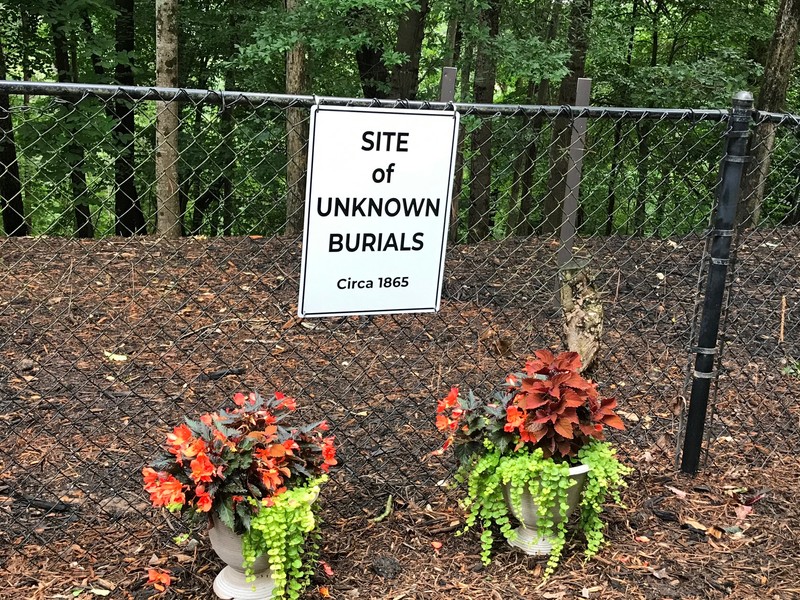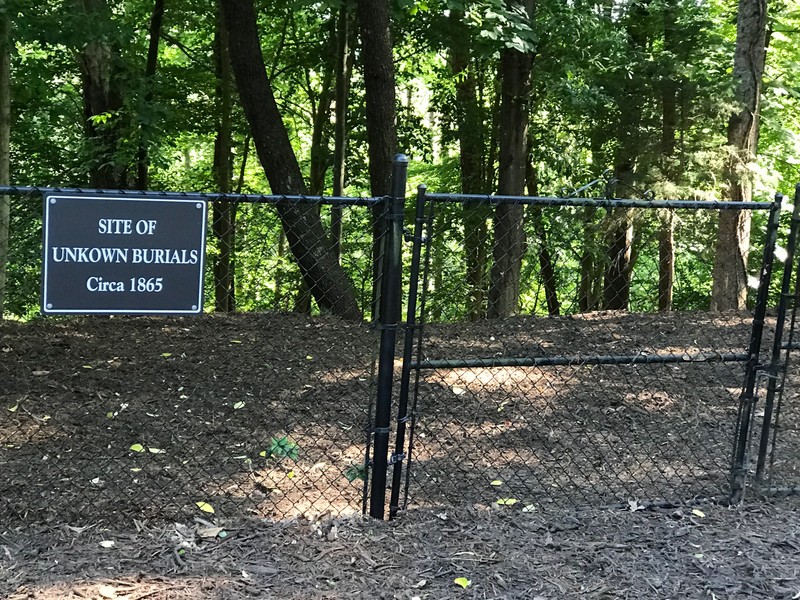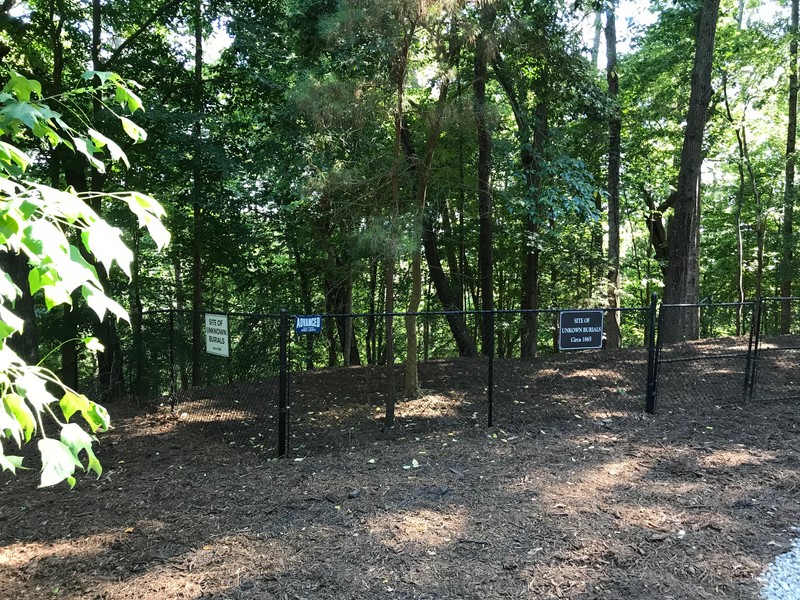Fort Hill Slave and Convict Cemetery Historical Marker
Introduction
Author-Uploaded Audio
Listen to a narration of this entry's description by Fort Hill User.
Text-to-speech Audio
Images
Cemetery Historical Marker

View at the site

Another view of the site

Additional views of the site

Backstory and Context
Author-Uploaded Audio
Listen to a narration of this entry's description by Fort Hill User.
Text-to-speech Audio
Upon this hill, this part of the former orchard was the burial grounds for the enslaved African Americans community at Fort Hill Plantation. Although deaths in the enslaved community were rarely documented, the passing of four enslaved persons were recorded along with the 1850 US Census. In November 1849, Elizabeth died at the age of 2 of whooping cough after being sick for six weeks. In 1850, Sophia died at the age of 35 in childbirth in January, Aleck died of white swelling at the age of 12 in February after suffering for two weeks, and John died of worms at the age of 2 in May after suffering for four days; they are likely buried here.
By July 29, 1865, a combined epidemic of whooping cough and measles had killed more than 70 enslaved persons, mostly children, at Fort Hill; death prevented them from experiencing freedom. By September 2, 1865, there were fifteen freedmen and women of color remaining at Fort Hill.
In the fall of 1891, 147 African Americans convict laborers were leased by the State to Clemson College; the Pickens Sentinel documented that the 3 or 4 convict laborers who had passed away were buried, amongst the former burial grounds of the enslaved community. In 1910, a smallpox epidemic killed many convict laborers, and, regardless of race, they were buried upon this hill.
The remaining upended field stones mark a few burial sites on this hill; however, other unmarked gravesites have been verified through Ground Penetrating Radar. At this time, the names, familiar relations, and time of death of those buried here are largely unknown.
Sources
Newsstand | Clemson University News and Stories, South Carolina. “Markers Signal New Effort to Share Clemson’s Full History.” Accessed May 26, 2020. https://newsstand.clemson.edu/markers-signal-new-effort-to-share-clemsons-full-history/.
Sams, Cathy. “Marking the Past.” Newstand-Clemson, 12 Apr. 2016,
https://ensemble.clemson.edu/hapi/v1/contents/63441b23-2dbf-43ff-9952-3500bbeb9d39/launch?
embedId=ensembleEmbeddedContent_IxtEY78t_0OZUjUAu-
udOQ&embedAsThumbnail=false&displayTitle=false&displaySharing=false&autoplay=false&
showCaptions=false&hideControls=true&audioPreviewImage=false&displayEmbedCode=false&
displayDownloadIcon=false&displayAttachments=false&displayLinks=false&displayCredits=true&
displayMetaData=false&displayVideoDuration=false&displayAnnotations=false&display
CaptionSearch=false&isJavascriptEmbed=True&isResponsive=true&displayViewersReport=
false&displayAxdxs=false&playlistId=00000000-0000-0000-0000-000000000000&isJavascriptInIframe=False.
https://newsstand.clemson.edu/markers-signal-new-effort-to-share-clemsons-full-history/.
image courtesy of Fort Hill
image courtesy of Fort Hill
image courtesy of Fort Hill
